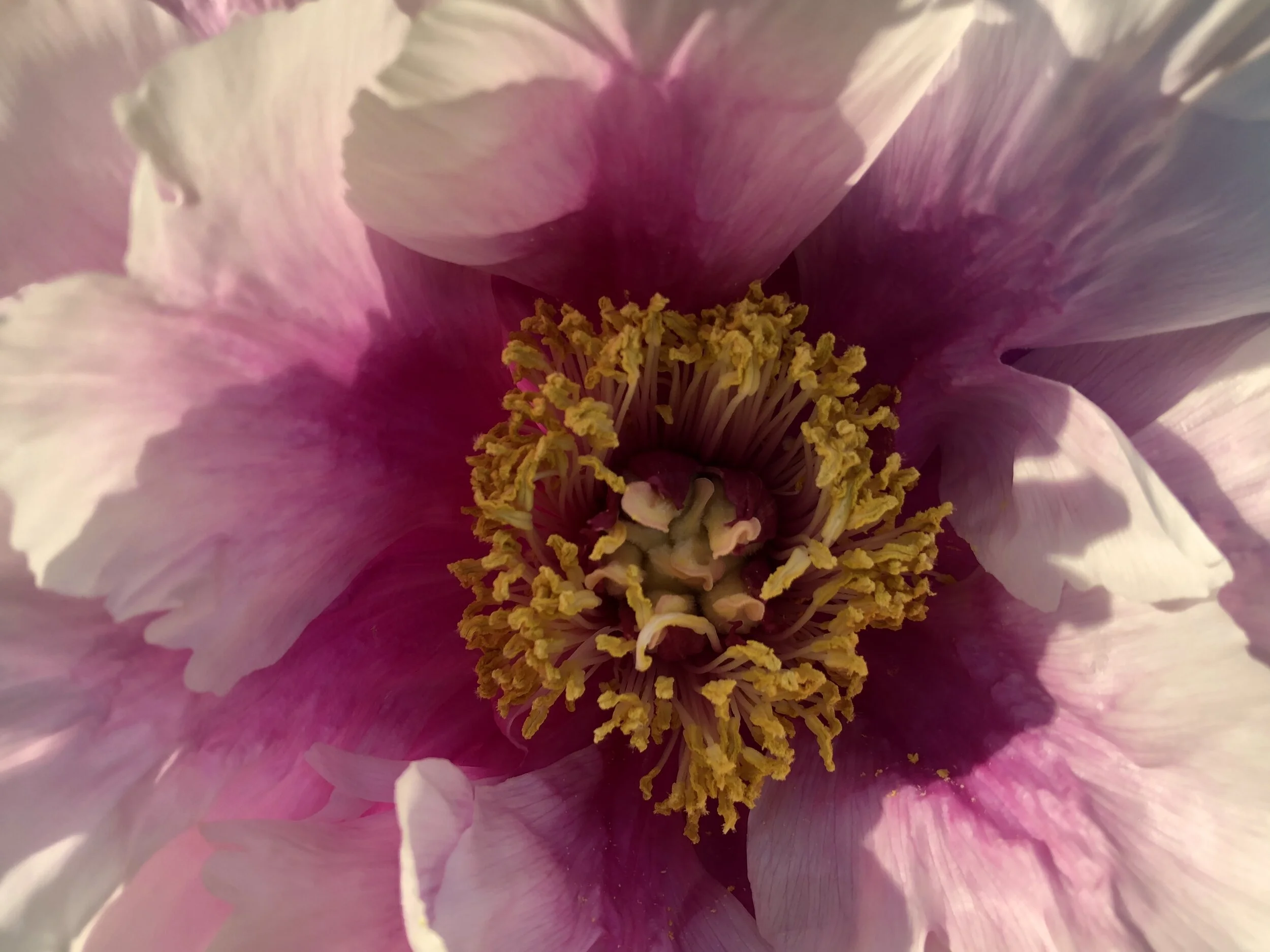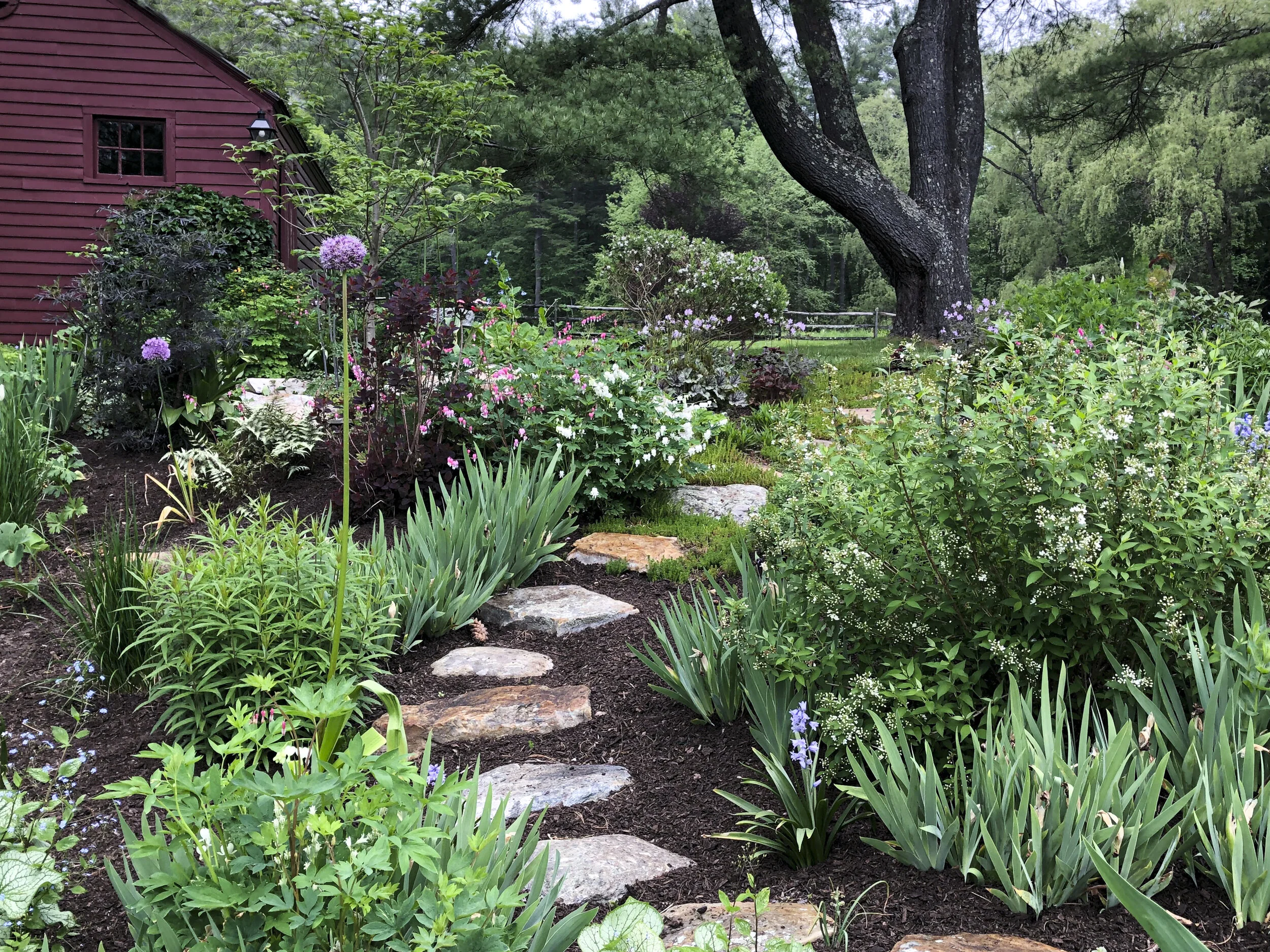Down the Garden Path
A few plants here: smoke bush, spirea, bleeding heart, allium, Hyacinth
While recently biking on an old country road by an oh-so-beautiful New England sheep farm, it occurred to me that garden paths offer a similar experience. Of course, the pace is slower and more leisurely — unless the road is uphill. I was reminded how a stone walkway invites me to amble along with a steaming cup of coffee in the morning or a glass of white wine in the evening. Inviting another garden lover — or simply friend, to explore makes for the icing on the cake.
Back in the Berkshires — and happily ensconced in my gardens in these “stay at home” days, I wished to visually (I won’t use the word, virtually) share some images. No more travel photography. I’m back to my old days of photographing plants and writing about gardens. For this piece, I chose to focus my lens primarily on a few stone paths I’ve created over the years. Of course, by photographing them in May, and not November makes for no comparison. No leaves and pine needles to rake just lush colors, textures and scents of plants. Still, as I would always emphasize to clients and readers, the hardscape, aka “bare bones”, is essential to a successful garden. It makes for a year around experience.
Herb garden in front; Plants beyond: Japanese peony. irises ‘Infinity’, and Allium
While a path’s primary function is to lead one to the front door, it plays other roles too. One of the most important is inviting a person not only physically but visually into the landscape. A path invites us in to approach, explore and appreciate it in a more intimate way. It also gives us more freedom to move. No need to be concerned about traipsing on the delicate trillium emerging in the spring or the dahlias about to burst through the soil.
In designing gardens, delineating and building pathways is a starting off point. This goes hand in hand with establishing the contours of the garden. Hopefully, both will be in harmony with the architecture and surroundings. Like stonewalls, fences, patios and gates, paths make for a different, more permanent and solid presence. Paths, in particular, both root us to the land and lead forward. Once installed, they aren’t fussy and transient like plants. That doesn’t mean that with time, weeds or ground covers such as thyme may make the stone path hard to find. One can’t escape maintenance in a more tame, not wild, outdoor environment.


One golden opportunity offered by walkways is the ability to use a succession of similar plants from salvia to astilbe that make for a border. No different from an allée it makes for an elegant effect.
What are some other benefits of paths? Aside from the esthetic where an element of mystery and discovery “just around the corner” may reside, there are practical ones as well. With more access to the interior of the garden, they let you work better. Getting closer to the plants - and maybe a butterfly or two, soil compression is avoided. In addition, adding a birdbath, fountain, bench or boulder makes for less need for plant material (an argument I’d use for my husband when doing masonry work…) Finally, there is also a sense of more open space; the garden breathes.
Below are a few closeups of the flora in bloom in late spring, early summer. They include the blue flowers and variegated silver white leaves of Brunera or Siberian Bugloss ‘Jack Frost’; a Poppy, the scented white Iris ‘Infinity’ which miraculously returns come fall, a Japanese Peony and Allium.






After the rain and a light dappling of snow in late April when things are more muted:
Alchemilla or Ladys Mantle, boxwood and hellebores





